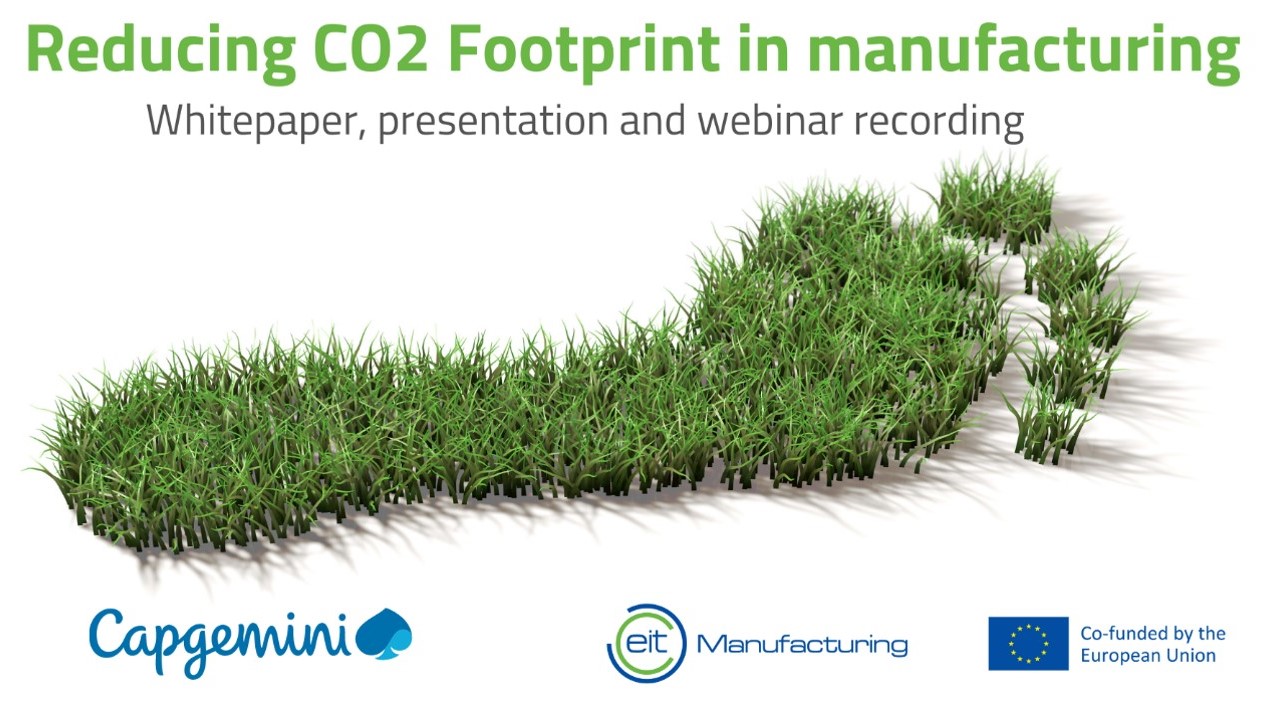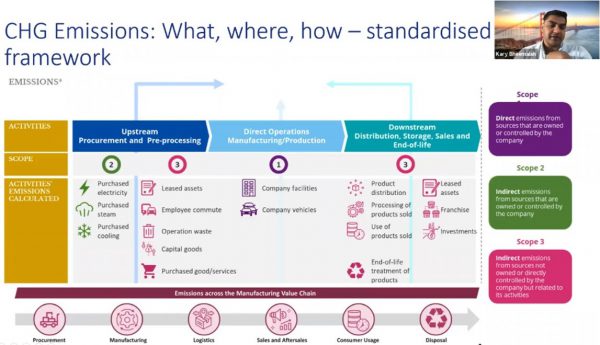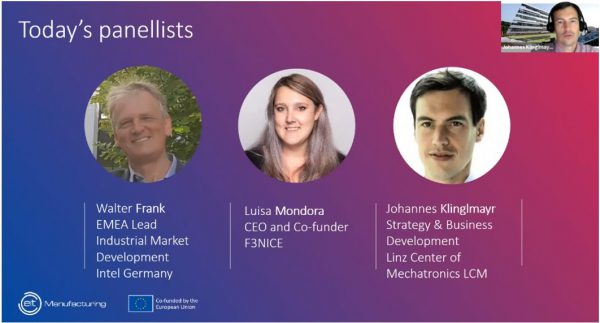Measuring and reducing CO2 footprint across the manufacturing industry

Measuring and reducing CO2 footprint across the manufacturing industry
Available on AGORA: New whitepaper and decision framework for quick analysis
Global warming and climate change are primarily caused by the sizable carbon footprint of large organisations. Automotive manufacturing, industrial manufacturing, energy, and utilities account for roughly about half of the global greenhouse gas emissions. Hence, reducing CO2 footprint and promoting green manufacturing and the circular economy are key focus areas also for EIT Manufacturing.

To address this topic, and to provide some useful frameworks to Europe’s manufacturing community, EIT Manufacturing and Cap Gemini recently issued a whitepaper on the topic. The whitepaper was presented during a dedicated webinar, together with Kary BHEEMAIAH, CTIO of Capgemini Invent, and an introduction by Eberhard Abele from TU Darmstadt.
“We need major structural changes to the way we produce and consume; this is a big responsibility for us working in production. Roughly, the industry contributes to about 50% of the global greenhouse gas emissions. It is a big responsibility for us to make change happen. Time for action is now, not tomorrow!”, said Professor Eberhard ABELE, from TU Darmstadt in his webinar introduction, adding that reducing CO2 footprint is much more complex compared to reducing CO2 footprint of buildings, and energy.
Value chain analysis
At first, to address the topic, it is important to look beyond looking at the entire value chain as a whole, and not only at the production site emissions. According to Kary BHEEMAIAH, Cap Gemini INVENT,  another success factor is to set short-term goals for carbon emission reduction, invest in innovation and new business models, and advocating public policy.
another success factor is to set short-term goals for carbon emission reduction, invest in innovation and new business models, and advocating public policy.
“Understanding the manufacturing value chain and its individual components helps you understand what you need to measure and how you can then go to find the right and most impactful solutions to reduce the CO2 footprint across the entire value chain. Some of the sources are directly or indirectly controlled by the company, whereas others are indirect emissions from sources related to its activities but coming from suppliers, logistics and so on”, Kary BHEEMAIAH said.
Opportunities: Sensors, cloud processing and computing
According to Bheemaiah, industry 4.0 technologies can play a big role in finding solutions to start  reducing the CO2 footprint, thanks to sophisticated sensors, seamless connectivity, and cloud computing & processing and so on that can be used to optimise the process. He adds that there also some experimental startups, specialized in turning CO2 into synthetic fuels.
reducing the CO2 footprint, thanks to sophisticated sensors, seamless connectivity, and cloud computing & processing and so on that can be used to optimise the process. He adds that there also some experimental startups, specialized in turning CO2 into synthetic fuels.
The webinar on July 13, was also joined by three panellists representing different industrial companies; Walter FRANK, EMEA Lead, Industrial Market Development, Intel; Luisa MONDORA, CEO and co-founder of F3NICE, and Johannes KLINGLMAYR, Strategy and Development, Linz Center of Mechatronics.
Access the full whitepaper and webinar on AGORA, our new social network and open innovation platform. Register now: https://agora-www.eitmanufacturing.eu/

